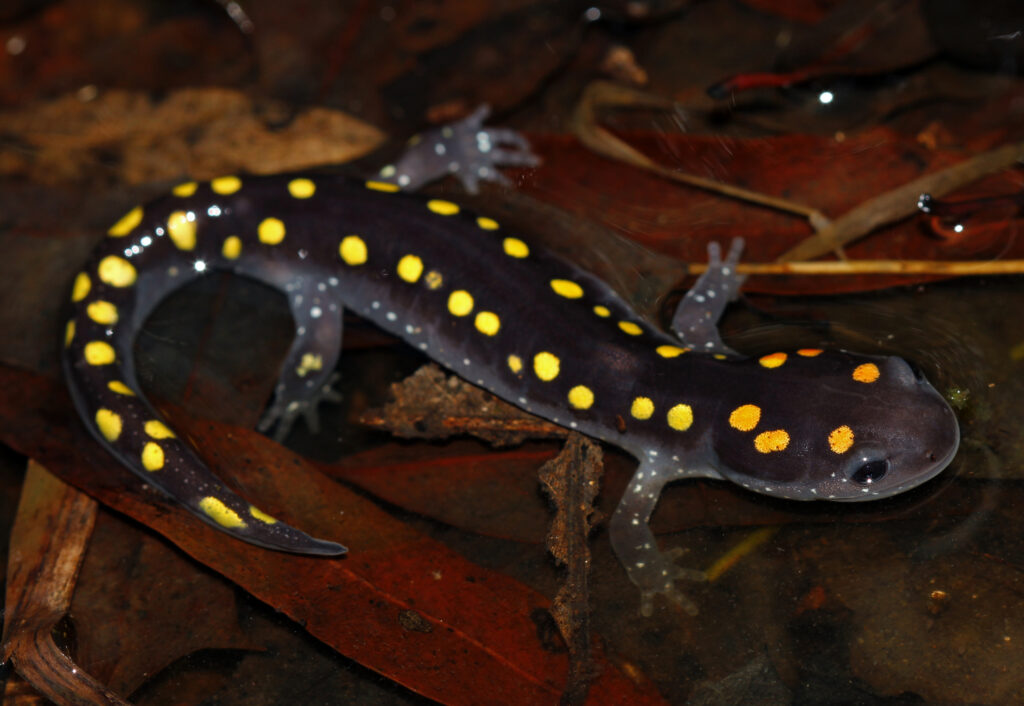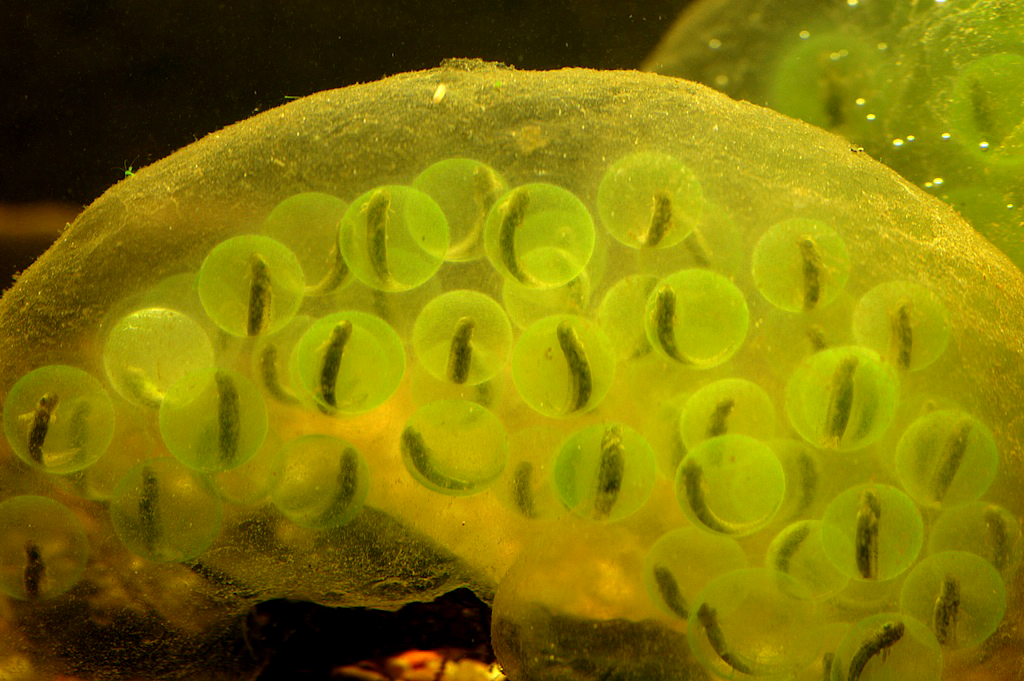
Spotted salamanders spend most of the year in burrows underground. In the spring, they emerge on warm rainy nights to migrate to vernal pools. A vernal pool is a shallow pool of water that fills in the spring from snowmelt and rain. Unlike ponds, there are no inlets or outlets to the vernal pool, leading them to dry up over the summer until they can refill in the following spring. This unique cycle of flooding and drying makes the pools the perfect breeding habitat for salamanders, frogs, and fairy shrimp, and unsuitable for their biggest predator, fish.
Salamanders will lay jelly-like masses of eggs along the edges of the pool and attached to branches that might be lying in the water. Eggs can often have a green hue to them, due to a green algae that coexists within the eggs. The algae feeds off of the waste from the growing larvae, and the larvae benefit from the production of oxygen within the egg.

In their larval stage, spotted salamanders are fully aquatic. Over the course of the summer, the larvae grow arms and legs and replace their gills with lungs. By early fall, they emerge from the pools as terrestrial salamanders.
As spring approaches, keep an eye out for migrating salamanders!
